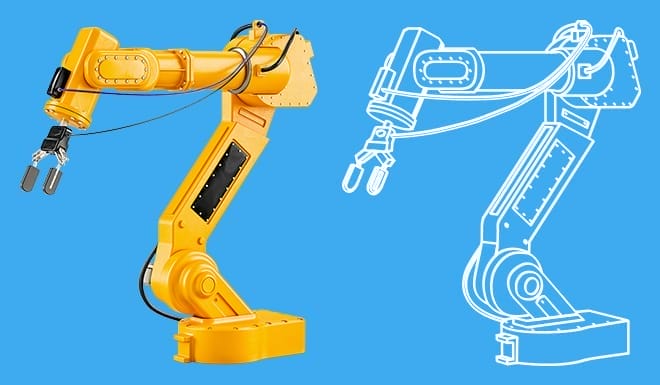There’s a widely repeated statement about models attributed to statistician George Box that goes like this: “All models are wrong, but some models are useful.” Usually, that statement is followed by an assessment of whether a model is accurate enough to be useful. But the nature of the model’s purpose and scope is less often discussed.
In the world of manufacturing, getting the right fit for the scope of a model is crucial to proper implementation of what is known as a digital twin. Digital twins have become popular lately and have provoked much discussion. They are models that are precise replicas of industrial equipment or entire manufacturing processes. You have a physical piece of equipment that’s made of steel and its digital twin that’s made of data. The twin helps you understand and assess the performance of the physical object or factory process.
Micro Scope vs. Macro Scope
By organizing, distilling, and analyzing data that’s coming from the physical thing with a digital twin, you can find out a lot about what has already happened, what is happening now, and what may happen next with that piece of equipment. But digital twins can have a broader purpose than just looking at devices. How do we best use the digital twin to learn about machine and manufacturing operations? How can we widen the scope of digital twins to create as much value as possible?
Broadly speaking, there are two approaches. The digital twin micro-scopists emphasize the idea of a digital twin precisely representing a physical device. This is the concept of the asset-specific digital twin. Digital twin macro-scopists recognize the importance of precisely representing a physical device. However, they argue that only representing a physical device artificially limits the scope of the digital twin model and the business value. To achieve the full potential of digital twins, macro-scopists believe that these siloed assets should also be able to be viewed as a system. This is the concept of the system-specific digital twin.

A System Digital Twin with a Macro Opportunity
In the modern manufacturing context, if we’re going to fully use the digital twin, manufacturers need to recognize that a digital twin is a model. Like Box said, we want our models to be useful. From my experience, a digital twin that is only a mirror of a single physical device leaves too much on the table. To get full value, a digital twin should be a real-time representation of all devices working together on an entire manufacturing line or of an entire supply chain. With this approach, a company would have a cascading hierarchy of digital twins tracking other digital twins, enabling a broad view and the ability to zoom in on an individual part or asset – something that many micro-scopists would agree is a good idea.
This range of possibilities presents opportunities for companies to embrace the larger, more useful concept of the digital twin and is the only way to truly build a foundation for scalable Digital Manufacturing. But to do this, a company must implement digital twins based on a standardized set of models. In part two of this series, I’ll discuss the unified data model that Sight Machine developed to support our system-wide digital twin and how this approach provides the most comprehensive insights into manufacturing operations.








